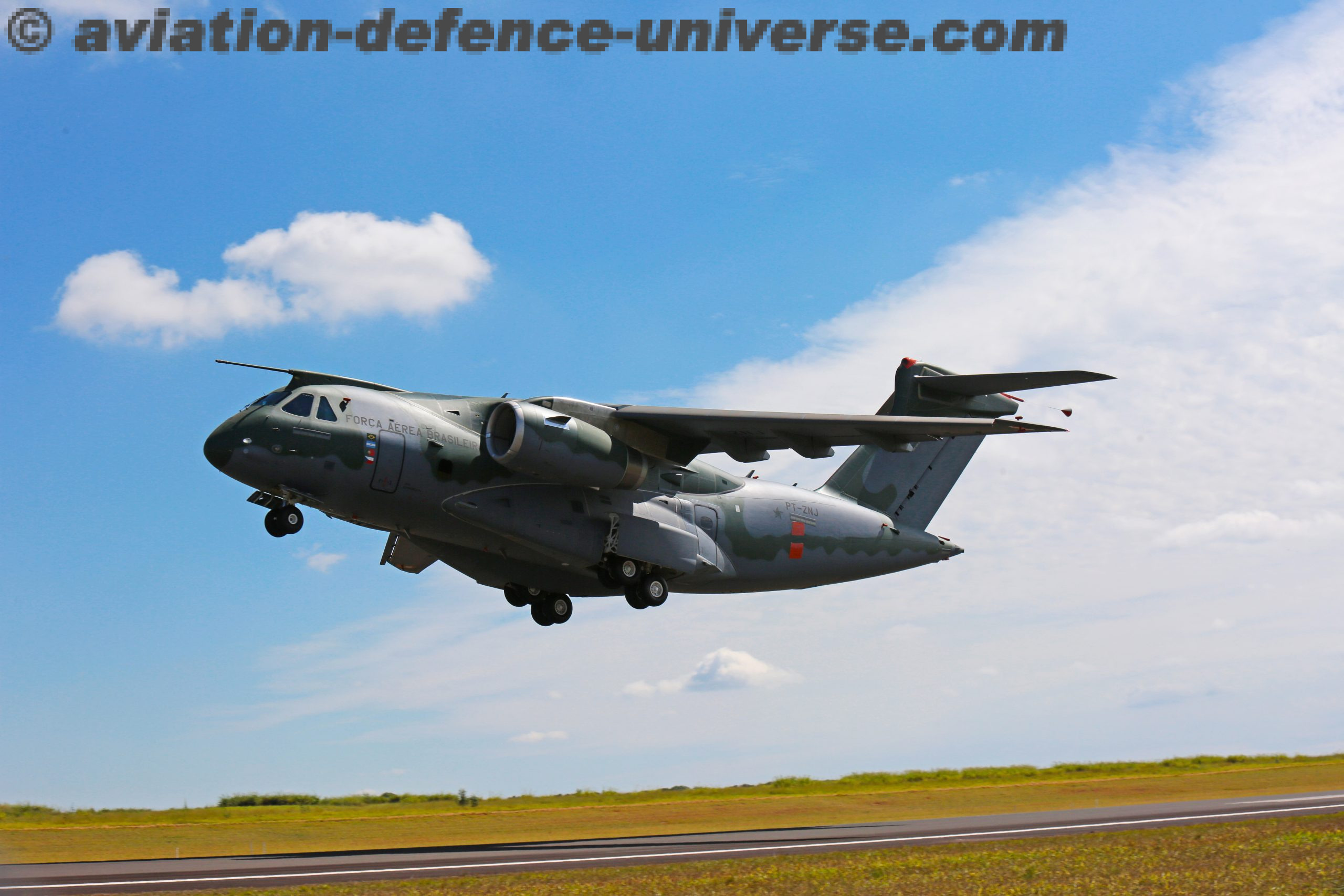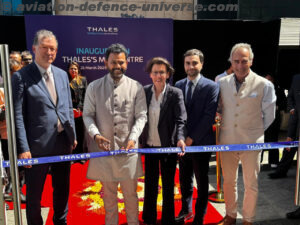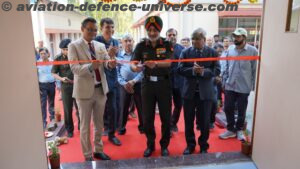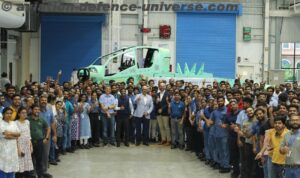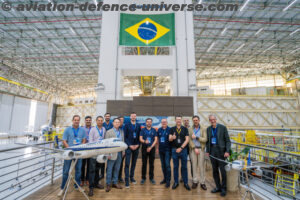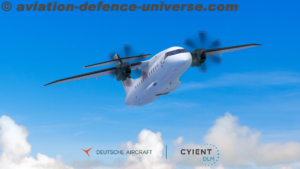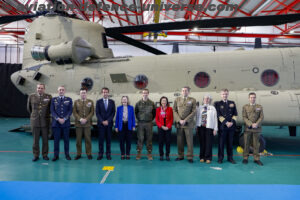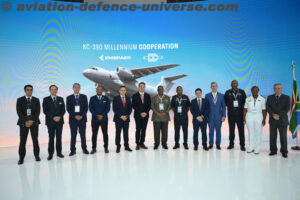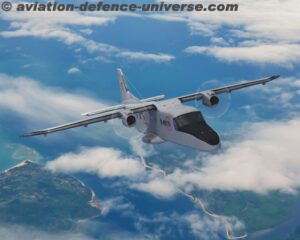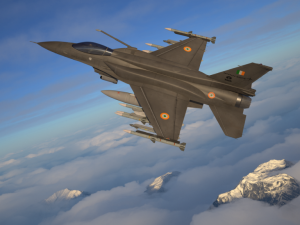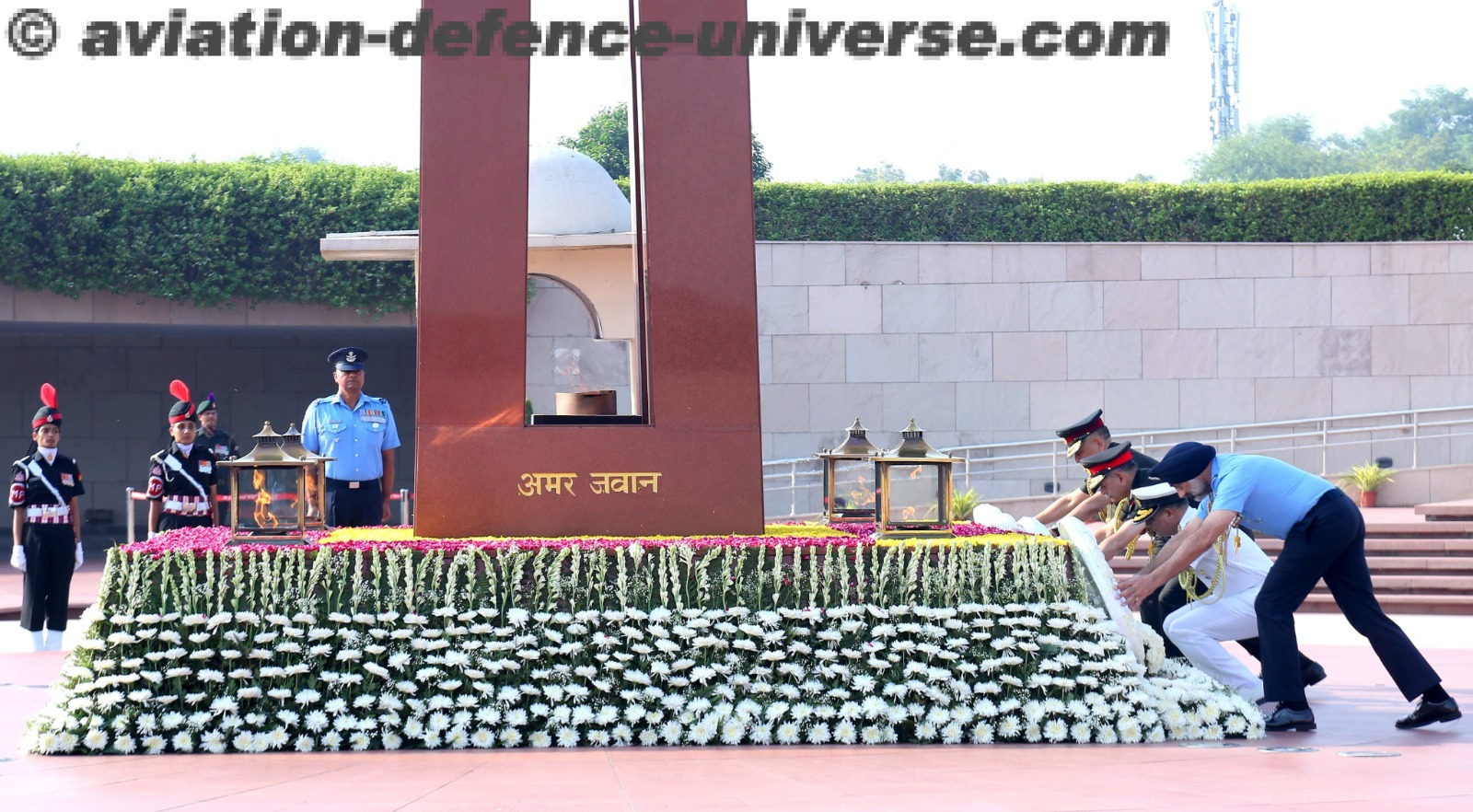- Media get the first-hand flight experience
By Sangeeta Saxena
New Delhi. 08 October 2024. It has been over three months since the flight, yet the excitement of experiencing the Brazilian-made Embraer C-390 Millennium remains strong. For any aviation enthusiast or journalist, flying on this military transport aircraft leaves an unforgettable impression.
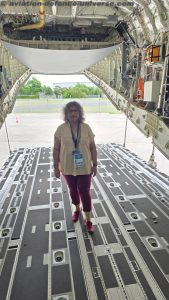 The day began with a blend of excitement and anticipation. Reading extensively about the C-390 and its capabilities is one thing, but witnessing it firsthand offers an entirely different perspective. The C-390 Millennium, also known as the KC-390 in its aerial refuelling variant, immediately stood out with its sleek design and robust structure, exuding strength and reliability. This flagship military transport aircraft from Embraer is designed to perform a wide range of missions, including cargo and troop transport, medical evacuation, and search and rescue.
The day began with a blend of excitement and anticipation. Reading extensively about the C-390 and its capabilities is one thing, but witnessing it firsthand offers an entirely different perspective. The C-390 Millennium, also known as the KC-390 in its aerial refuelling variant, immediately stood out with its sleek design and robust structure, exuding strength and reliability. This flagship military transport aircraft from Embraer is designed to perform a wide range of missions, including cargo and troop transport, medical evacuation, and search and rescue.
The aircraft holds special relevance, as Embraer has responded to the Request for Information (RFI) floated by the Indian Air Force for its Medium Transport Aircraft (MTA) program. Lockheed Martin, Embraer, and Airbus are competing for the IAF’s MTA procurement, with the goal of replacing the aging AN-32 and IL-76 fleets with 40-80 new aircraft. The Request for Proposal (RFP) is eagerly awaited.
And today as Indian Air Force celebrates it’s 92nd birthday Embraer recalls it’s long standing relationship with IAF. “On the occasion of India’s 92nd Air Force Day, Embraer extends its heartfelt congratulations to the Indian Air Force and the nation. We are proud of our long-standing partnership with India and honoured to have played a pivotal role in enhancing its defence capabilities and national security,” stated Embraer Defence & Security’s President & CEO Bosco da Costa Junior.
In February of this year, Embraer Defence & Security and Mahindra Defence signed a Memorandum of Understanding (MoU) to collaborate on the Indian Air Force’s future MTA procurement project, specifically focusing on the C-390 Millennium. This agreement was signed at the Brazilian Embassy in New Delhi by Bosco da Costa Junior, President & CEO of Embraer Defence & Security, and Vinod Sahay, President of Aerospace & Defence at Mahindra Defence Systems.
Boarding the C-390 Millennium through its spacious cargo hold was an experience in itself. The aircraft can accommodate up to 26 metric tons of cargo and features a rear ramp for efficient loading and unloading, a fully pressurized cargo bay, and the ability to transport oversized cargo like helicopters and armored vehicles. The modern avionics and ergonomic cockpit showcased Embraer’s commitment to integrating cutting-edge technology.
Before take off, the flight crew provided a detailed briefing, explaining the aircraft’s features and the flight plan. As the plane taxied to the runway, anticipation built. The take off was smooth yet powerful, demonstrating the aircraft’s thrust and agility. The C-390 Millennium, powered by two International Aero Engines V2500 turbofan engines, boasts a maximum speed of 470 knots (870 km/h) and a range of over 2,500 nautical miles (4,630 kilometres). Compared to other medium-sized military transport aircraft, the C-390 offers greater payload capacity, range, and speed, all while maintaining the flexibility to operate on unpaved runways, such as packed earth and gravel. The KC-390 variant, equipped with air-to-air refuelling capabilities, can refuel from other KC-390s using underwing pods.
Throughout the flight, the aircraft’s versatility was on full display. The C-390 Millennium can be easily converted for various missions, from cargo transport to medical evacuation, fire fighting, troop transport, aerial refuelling, and search and rescue (SAR) operations. The Embraer flight crew demonstrated several manoeuvres, highlighting the aircraft’s stability and responsiveness. The advanced Cargo Handling System (CHS) further illustrated its flexibility, allowing for quick reconfiguration without special tools. The cargo floor can switch from flat to a roller configuration with ease, and the CHS includes all necessary accessories for efficient cargo management.
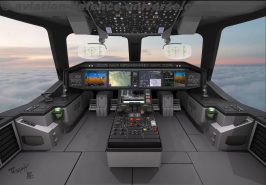 Inside the cockpit, the advanced Pro Line Fusion avionics suite provided enhanced situational awareness and simplified mission planning. The aircraft’s self-protection systems, including radar and infrared countermeasures, offered robust defence against potential threats. With an advanced fly-by-wire control system and state-of-the-art avionics, the C-390’s handling and safety were precise and reliable throughout the flight.
Inside the cockpit, the advanced Pro Line Fusion avionics suite provided enhanced situational awareness and simplified mission planning. The aircraft’s self-protection systems, including radar and infrared countermeasures, offered robust defence against potential threats. With an advanced fly-by-wire control system and state-of-the-art avionics, the C-390’s handling and safety were precise and reliable throughout the flight.
“From collaborating on the development of the Netra AEW&C based on the Embraer ERJ145 platform, and fulfilling the transport needs of Indian Government stakeholders with the Embraer Legacy 600 VIP fleet, to advancing the C-390 multi-mission aircraft program in India, Embraer remains committed to supporting India’s vision of strengthening its defence and aerospace sectors, in line with ‘Make in India’ towards achieving ‘Atmanirbhar Bharat,” Bosco reiterated.
Since its entry into service with the Brazilian Air Force in 2019 and the Portuguese Air Force in 2023, the C-390 Millennium has proven its capabilities. By June 2024, the fleet had logged over 13,000 flight hours, with an impressive mission completion rate of over 99%. The aircraft’s dependability and performance have also attracted interest from other nations, including NATO members such as Portugal, Hungary, Austria, the Netherlands, and South Korea.
Embraer officials aboard the flight emphasized the C-390’s reduced maintenance requirements and lower operating costs, thanks to fewer on-demand inspections and reliable systems. The aircraft strikes a perfect balance between innovative design and proven technology, offering high cargo capacity and air mobility. Additionally, it is fully compliant with future CNS/ATM requirements and equipped with tactical radar, self-protection systems, and a cargo handling system capable of precise aerial resupply.
They unanimously felt that the Embraer C-390 Millennium is one of the best options for India’s mid-air refueller program due to its versatility, cost-effectiveness, and advanced capabilities. Here are some key reasons according to them ,why the C-390 stands out.
 First is it’s Multi-role Capability, they felt. The C-390 is a versatile aircraft that not only performs air-to-air refuelling but can also be used for troop transport, medical evacuation, cargo transport, and humanitarian missions. Its flexibility allows it to serve multiple roles, making it a cost-effective investment for the Indian Air Force (IAF).
First is it’s Multi-role Capability, they felt. The C-390 is a versatile aircraft that not only performs air-to-air refuelling but can also be used for troop transport, medical evacuation, cargo transport, and humanitarian missions. Its flexibility allows it to serve multiple roles, making it a cost-effective investment for the Indian Air Force (IAF).
Second is it’s refuelling capacity, as per them. Equipped with advanced refuelling systems, including a probe-and-drogue refuelling mechanism, the C-390 can refuel a wide range of aircraft, including fighters, helicopters, and other transport planes. This capability is essential for maintaining long-range air operations, extending the reach of the IAF’s combat fleet, and supporting missions in remote areas.
Third major reiteration was the most modern and state-of-the-art avionics C-390 features. It’s fly-by-wire technology, and a modern cockpit that enhances operational efficiency and reduces pilot workload. Its advanced systems improve mission effectiveness, particularly in demanding environments such as high-altitude regions or extreme weather conditions.
Fourth point where Embraer feels it takes the cake is it’s cost efficiency: Compared to larger strategic refuelling platforms, the C-390 offers a more affordable solution for mid-air refuelling needs, both in terms of acquisition and operational costs. This makes it an attractive option for India, where budget constraints are a key factor in defence procurements, feels the Brazilian OEM.
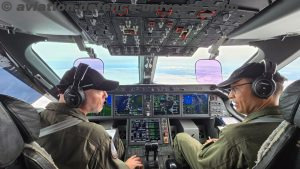 The fifth asset the company feels is it’s performance. C-390 is known for its impressive speed, range, and payload capacity. With a top speed of 470 knots and a range of over 6,000 kilometres, it can efficiently cover long distances and operate in remote or challenging terrains, which is crucial for India’s vast and diverse geography.
The fifth asset the company feels is it’s performance. C-390 is known for its impressive speed, range, and payload capacity. With a top speed of 470 knots and a range of over 6,000 kilometres, it can efficiently cover long distances and operate in remote or challenging terrains, which is crucial for India’s vast and diverse geography.
The sixth feature can also be called the USP they feel for India deciding on C-390. It is interoperability and partnership. The Embraer C-390 has the potential for greater industrial collaboration between India and Brazil, offering opportunities for technology transfer and joint production under India’s ‘Make in India’ initiative. Embraer’s established ties with the Indian defence sector further strengthen the case for the C-390, ensuring smoother integration into the IAF’s existing fleet, the aircraft manufacturer feels.
The seventh is it’s potential to give scalability and future-proofing. This they explained means that the C-390 is designed for modularity, meaning it can be easily upgraded or modified in the future. This ensures that the aircraft can adapt to evolving operational needs, allowing India to maintain a modern refuelling capability for years to come.
With these capabilities, the Embraer C-390 feels it presents a strong case for being the optimal choice for India’s mid-air refuelling requirements, offering the right balance of cost, versatility, and performance.
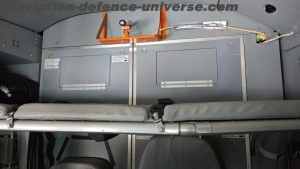 One notable aspect of the flight was the remarkable noise reduction in the cabin—there was no need for earplugs, and the smooth landing felt more akin to that of a passenger aircraft. The C-390 even features a proper bathroom, complete with a locking door, which is unusual for military transport aircraft.
One notable aspect of the flight was the remarkable noise reduction in the cabin—there was no need for earplugs, and the smooth landing felt more akin to that of a passenger aircraft. The C-390 even features a proper bathroom, complete with a locking door, which is unusual for military transport aircraft.
The C-390 Millennium is currently undergoing full military certification, utilizing a dual approach combining civil and military airworthiness standards. This hybrid process ensures the aircraft is safe and capable of performing all military missions.
With a payload capacity of up to 57,320 pounds (26,000 kg) and the ability to transport heavy vehicles, paratroopers, and medical evacuation stretchers, the C-390 Millennium stands out as a leader in its class. Its fuel capacity and larger cargo capabilities further position it ahead of other medium-sized transport aircraft like the Lockheed C-130 and Antonov An-178.
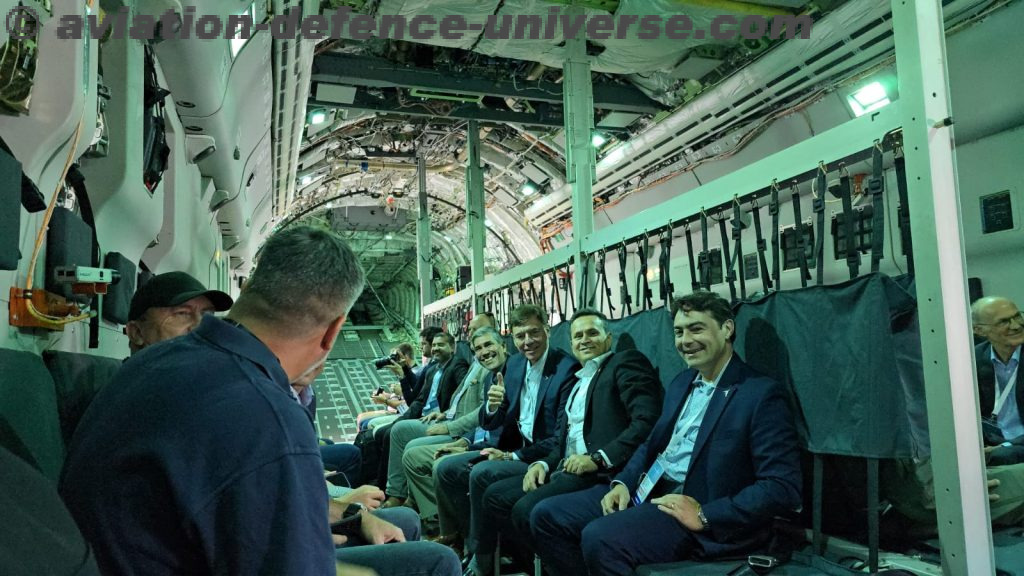
In conclusion, the C-390 Millennium exemplifies Embraer’s innovation and engineering excellence. This first flight was a testament to the aircraft’s exceptional design, performance, and versatility, leaving a lasting impression on all aboard. The OEM is waiting for IAF to respond.






































